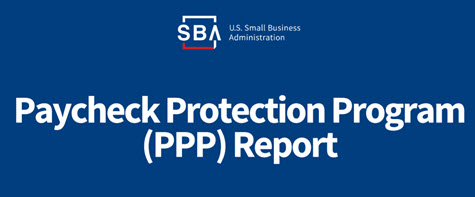
A supplemental coronavirus emergency aid measure enacted today replenishes the Paycheck Protection Program (PPP), which ran out of money after its launch on April 3 due to high demand. A recent Small Business Administration (SBA) report shows real estate, rental and leasing businesses were approved for 79,784 PPP loans totaling more than $10.7 billion (figures through April 16). [Roundtable Weekly, April 17]
- SBA’s PPP Loan Approvals report also indicates that, through April 16, the construction sector received the most PPP loans ($44.9 billion) with health care ($39.8 billion), hotels and restaurants ($30.5 billion), and retail ($29.4 billion) also receiving significant percentages of assistance.
- The Roundtable on April 8 submitted an 8-Point Plan to policymakers that seeks to clarify and improve the PPP.
- Policymakers this week have also expressed ideas for expanding the next coronavirus response package beyond individual and business relief measures. Additional funding programs may include hazard pay for essential workers, vote-by-mail programs and funding for the U.S. Postal Service, with a total cost that could exceed the $2.2 trillion Coronavirus Aid, Relief, and Economic Security (CARES) Act passed by Congress last month. (Roundtable Weekly, March 27)
- This week’s funding bill is referred to as an interim step to combat the economic impact of the pandemic as lawmakers consider a major follow-up package, generally referred to as “CARES 2.” (The Hill, April 23)
- Senate Democratic Leader Chuck Schumer (D-NY) said, “We will need a big, strong and active [fourth bill]. It’ll have to come very soon. The needs are large and great.” Schumer added that funding for state and local governments is a top priority as municipalities’ tax revenues drop and city officials work to set budgets for the next fiscal year. (The Hill and Axios Cities, April 22)
- Schumer also stated Federal Reserve Board Chairman Jerome Powell is working to open up the Main Street Lending program to nonprofits and municipal governments. (AP, April 21)
- Additionally, Sens. Bill Cassidy, (R-LA) and Bob Menendez, (D-N.J.) on April 19 unveiled legislation that would provide a $500 billion fund to help states and local governments respond to the public health and economic crisis, while maintaining essential services. (Sen. Cassidy news release)
- Treasury Secretary Steven Mnuchin is reported as stating the next bill may include some infrastructure funding to boost 5G cellular and broadband access, and incentives for manufacturers to bring PPE, pharmaceutical, and other critical infrastructure production back from China. (POLITICO Playbook, April 24)
Senate Majority Leader Mitch McConnell (R-KY) this week hedged on any endorsement of assistance to state and local governments, instead focusing on how future coronavirus-related legislation could add to the growing national debt. “Let’s weigh this very carefully, because the future of our country in terms of the amount of debt that we’re adding up is a matter of genuine concern.” (The Hill, April 22)
Treasury Questions Large Companies’ PPP Loan Eligibility
Treasury and SBA updated their Frequently Asked Questions guidance on the PPP yesterday, which questions whether businesses owned by large companies, with adequate sources of liquidity to support the business’s ongoing operations, qualify for a PPP loan. (Question # 31 from FAQs)
- The answer addresses public companies seeking PPP loans, stating “it is unlikely that a public company with substantial market value and access to capital markets will be able to make the required certification [of economic need] in good faith.”
- Before the PPP ran out of money, approximately 150 public companies received nearly $600 million in loans from the $350 billion program, with some of those companies announcing this week that they will return the funding obtained. (Wall Street Journal, April 23)
- Updates to the PPP rules and guidance are available via the Treasury Department’s website (April 23 FAQ update here) and the Small Business Administration’s Covid-19 resource webpage.
The Real Estate Roundtable’s response and resources, including policy comment letters related to the pandemic, are listed on its website.
# # #








